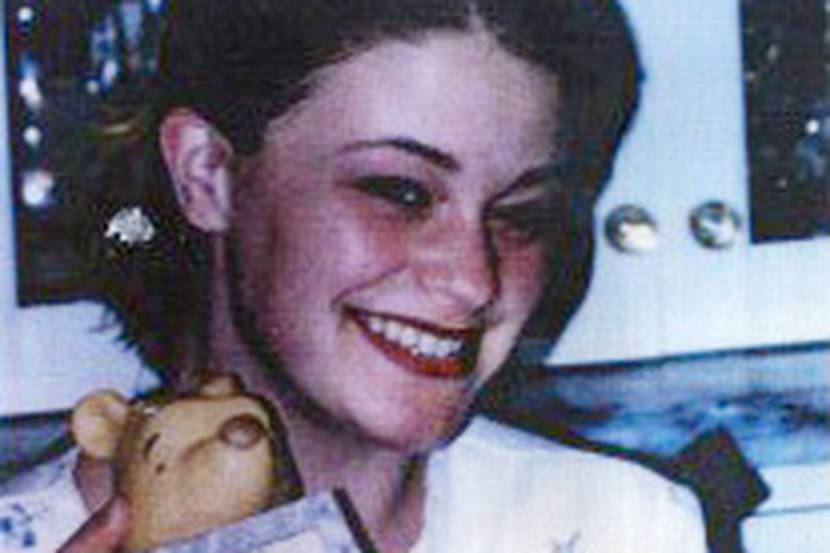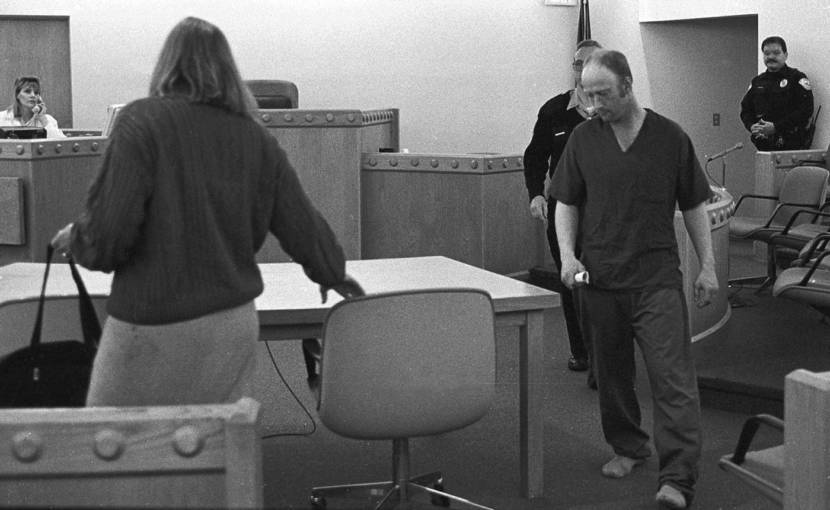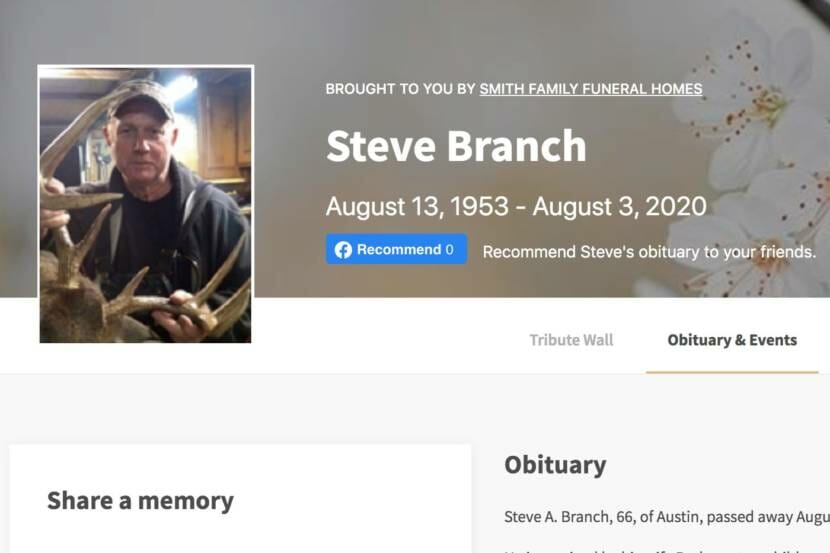
BELLINGHAM, Wash. — When the news from Alaska reached Richard Bingham in his modest apartment here last month, it landed like a grenade into his unsettled life.
“Doggone it,” he said. “It gets me very upset.”
Twenty-four years ago, when he was a janitor living on a fishing boat in Sitka’s harbor, Bingham was accused of the rape and murder of a teenage girl.
The killing of Jessica Baggen, a vivacious 17-year-old daughter of a respected local family, became one of the most notorious crimes in recent Sitka history.
Bingham spent 13 months in prison before being acquitted of the murder at trial.
Despite the efforts of cold case detectives and private investigators, the case remained unsolved for decades. For Bingham, the fog of suspicion never really lifted, even in his new life 800 miles south.
On Aug. 11 Alaska officials abruptly announced they had found the real killer.
Baggen was murdered by a former Sitka man named Steve Branch, Alaska Department of Public Safety commissioner Amanda Price said. Detectives finally connected him to the crime using forensic genetic genealogy. It was the third time since the beginning of 2019 that Alaska law enforcement had used the technique to crack a case dormant for decades.
When Alaska State Troopers confronted Branch, now 66 and living in Arkansas, he killed himself.
He would never face a trial. Still, “we can finally say that Jessica’s case is solved,” Price said.
Branch had been charged with rape in Sitka the same year as the murder. But he had never been “on the radar” of detectives before, according to the state’s cold case investigator, Randy McPherron.
Now, Bingham and the lawyer who defended him back then, Galen Paine, roil with anger and incredulity about an investigation that not only damaged Bingham, but cost the Baggen family the anguish of a misguided trial and decades of gaping questions.
“If Steve Branch wasn’t a suspect,” Paine said, “why the hell not?”
A seismic event
Jessica Baggen was a daughter of Sitka, a born-and-raised local kid who loved family fishing trips and hoped to study photography.

On May 4, 1996, the eve of her 17th birthday, she’d gone to her sister’s home, in a trailer court off Sawmill Creek Road. She was last seen leaving to walk home.
She never arrived. After a frantic search, her body was discovered two days later, concealed beneath a large fallen tree in the Sitka National Historic Park, nearly across the road from the Alaska State Troopers academy. Investigators said she had been raped and asphyxiated.
The killing of Jessica Baggen was a “seismic” event for Sitka, said John Straley, a longtime local author and criminal defense investigator. He was not involved in the case.
Sitkans thought of their town as safe. Residents worried more about encountering dangerous wildlife than people in the woods. In 1993, the Associated Press wrote a national story about how mild and goofy Sitka’s police blotter was, using examples of residents playing croquet too loudly and a report of a suspicious $1 bill.
“‘Cops’ would be a whole different show in Sitka,” the article said.
A stranger raping and murdering a vibrant teenager was “so far out of the bounds of what happens here,” said Paine, who still lives in Sitka.

The community mourned Baggen together. More than 1,500 people — over a third of the town’s population back then — gathered for a candlelight vigil on the bridge where her body was found.
“It was the largest gathering I ever remember in Sitka,” Straley said.
People stood for more than an hour. Even in the crowd, it was so silent you could hear ravens cawing from the hemlock trees, the Daily Sitka Sentinel reported. In the following days, with the killer at large, the town remained on edge.
“During that 10 days the town was just tense,” Paine remembered. “Every man felt like a suspect. Every woman felt like a potential victim.”
Law enforcement faced intense pressure to identify the killer, she said. Then a 34-year-old named Richard Bingham walked into the Sitka Police Department, looking for answers of his own.
A confession
Bingham was a hard-drinking longtime Sitka resident. He had most recently been living in the harbor on a boat and employed as a janitor at Sheldon Jackson College. He was proud of the job, he remembers.
Accounts from the time paint him as highly suggestible: His friends liked to tease him by inventing wild acts he’d supposedly done during drinking blackouts. They’d read that famously mild police blotter and tell Bingham he’d done whatever it said.
“He would feel terrible about it and try to make amends,” Straley said.

According to one story, Bingham had been told he’d stolen a salmon from a fish processor where he worked, so he showed up with a replacement fish. The manager told him to go home — he hadn’t stolen a fish.
When news of Baggen’s death overwhelmed the town, a drinking buddy suggested to Bingham he may have had something to do with the killing, said Paine. Soon, he was at the police station telling the officers he was having disturbing dreams and flashbacks — could they help him?
“He trusted the police,” Paine would later tell a jury. “What a stupid mistake.”
Officers with Sitka’s tiny police department interrogated Bingham for several hours using the REID technique, an aggressive method that has been criticized for its tendency to produce false confessions.
Part of the REID technique involves police insisting evidence exists that the person committed the crime — even if the evidence does not in fact exist.
During the interview, police fed Bingham details he agreed with or half-agreed with, Paine said. Nothing Bingham volunteered himself was accurate. The confession was coerced, Paine said. But it was enough for the Sitka Police Department.
On May 15, 1996, 10 days after the murder, Richard Bingham was arrested and charged with murder.

A sexual assault suspect
At the same time, a local mechanic named Steve Branch faced his own trouble.
In March — two months before Baggen was murdered — a worker at Seamart, a local grocery, found a teenage co-worker crying in the breakroom. When a co-worker asked what was wrong, the girl, 18, said Steve Branch had raped her.
After the rape was reported to the Sitka Police Department in mid-March, officers asked the teenager to get Branch to confess on a recorded call. He didn’t admit to anything, according to court documents from the case.
Branch was not arrested for the alleged rape until June, more than a month after Baggen had been murdered, and after Bingham was already in jail.
Paine now wonders how it’s possible a man charged with the forcible sexual assault of a similarly aged teen girl within months of Baggen’s death was never a suspect, as officials have said.
“He was clearly on their radar at the right time — or should have been,” she said.
Prosecutors even had Branch’s blood, which could, with a search warrant, have been used to compare to DNA samples taken from Baggen’s body.
Court files from the sexual assault case against Steve Branch show that prosecutors asked for a blood test for the stated purpose of determining whether he had HIV.
Richard Tugmon, the retired investigator who worked the case, did not respond to attempts to contact him for this story. Nick Ward, described in news accounts as the lead detective for the Sitka Police Department on the case, also did not respond to attempts to contact him. Public records show Ward married one of Branch’s sisters.
A trial and a goodbye
Meanwhile, Richard Bingham sat in a Juneau jail. He first spent months in isolation — protection from the other prisoners. Then he was moved into the general population.
He remembers feeling like a walking target. Inmates were always trying to get him into the corners that video cameras couldn’t capture.
“God dang, that was the worst part of my life,” he said.
Bingham’s trial was moved to Juneau because of “the difficulty of finding an impartial jury” in Sitka, the Daily Sitka Sentinel reported at the time.
“Many people assumed because he’d been arrested, he was guilty,” Paine said.
Paine knew it would be difficult to overcome the prosecution’s main point: that Bingham had confessed. She put a false confession expert on the stand and called someone from the state crime lab to emphasize that DNA evidence from the scene did not match Bingham.
A psychologist testified that Bingham was vulnerable to suggestion and had intellectual deficiencies. Paine played video of the interrogation to the jury.
At the conclusion of the 10-day trial, the jury took two hours to acquit Bingham on all charges.
“We felt he didn’t do it,” juror Frank Metcalf told the Juneau Empire at the time. “That means the guy who did it is still out there.”
Paine remembers picking up Bingham at the jail and driving him straight to the Juneau airport. The destination on his plane ticket was Seattle.
“We couldn’t have sent him back to Sitka,” she said. “He would have been hurt or killed.”
Bingham remembers those first hours of freedom vividly: landing in Seattle early in the morning and hitchhiking all the way to Montana. He eventually found his way up to Bellingham, a college town not far from the Canadian border, because he’d heard there was work there. He never left.
People never really stopped thinking he was the one who killed Jessica Baggen, he said.
Steve Branch
Richard Bingham wasn’t the only one on trial in 1997. Branch went on trial for felony sexual assault.
Branch took the stand and cried, talking about the mistake he’d made, but maintaining the encounter was consensual. A jury took only a few hours to acquit him.
Several former and current Sitka residents interviewed for this story say Branch didn’t raise much of a profile in town. One remembers that Branch paid back overdue legal bills for the sexual assault case incrementally, dropping off small checks for years to pay off the debt.
He lived in Sitka for nearly 15 years after the murder. In 2010, he and family members moved to the small town of Austin, Arkansas, northeast of Little Rock.
Some people in Sitka doubt whether genetic genealogy is as much of a slam-dunk as portrayed by law enforcement officials and say Branch’s suicide may not have been an admission of guilt as much as fear of prosecution he had already experienced once.
His obituary said he enjoyed fishing and hunting and outdoor sports. Branch’s wife declined to comment for this story.
‘Shameful’
John Baeza showed up in Sitka around the year 2000. The retired New York Police Department detective had been hired by the Baggen family to investigate the still unsolved case.
He remembers the tiny Sitka Police Department didn’t have sophisticated access to records, especially before widespread digitization. Much of the strategy relied on combing through DMV records to isolate men with red or reddish-blond hair — matching the color of pubic hairs found at the crime scene.
Steve Branch had reddish or reddish-blond hair, people remember. Baeza doesn’t recall Branch coming up as a possible suspect.
Now knowing that Branch was investigated for a sexual assault around the same time that Baggen was killed, Baeza finds it hard to believe police wouldn’t have focused on him.
“Should have been on everybody’s mind. Everybody should have known about that case — ‘Hey, you gotta check into this guy,’ ” he said.
He wonders if the “confession” by Bingham blinded officers to pursuing other possibilities. That happens, he said: “It took their attention off,” he said. “I think they thought they had their guy.”
“Honestly, it’s shameful,” he said.
Baeza says he’s grateful that the Baggen family has some answers. He blames himself, too.
“I can’t help but feeling that I failed in the investigation,” Baeza said. “It literally breaks my heart. I think about it every night now. How. How could I have missed it?”
‘What did he do during the last 25 years?’
On a recent Friday afternoon, Bingham walked out of his apartment carrying a 22-ounce beer and wearing an eyepatch and Seattle Seahawks flat brim hat.
These days, he’s in poor health. He has multiple sclerosis. An eyepatch covers the eye he recently lost to complications from diabetes.
Life in Washington hasn’t been all bad. He has lived in Bellingham, doing a variety of jobs in the construction industry. To pass the time, he watches TV in his apartment. He buys old watches and fixes them. He has a girlfriend.
Bingham hopes a lawyer will read this story and represent him in a lawsuit. He thinks he should be compensated for the episode that cleaved his life in two. He has not been back to Sitka. He probably never will.
“There ain’t nothing there for me anymore,” Bingham said, kicking rocks in his apartment parking lot.
The fog of suspicion that had clouded his life is lifting. It doesn’t change the last quarter-century. And while the Baggen family has new answers, they will never have their daughter back.
People throw the word “closure” around, Paine said. It doesn’t apply here, she thinks.
For her, the most haunting question is what isn’t known about Branch — and may never be known.
“What did he do during the last 25 years?”

The limits and successes of genetic genealogy
The technique that investigators say led them to Branch did not exist in 1996. In fact, it barely existed three years ago.
Investigative genetic genealogy first came to prominence in early 2018. Investigators use suspect DNA samples taken from crime scenes — some decades old, like in Baggen’s case — and create DNA profiles, which are then uploaded to websites such as GEDMatch, where amateur genealogists have posted their own genetic profiles to learn more about their ancestors and possible relatives.
From there, a trained genetic genealogist uses the data to construct a family tree, said Cece Moore, a scientist with Parabon NanoLabs who is credited as one of the pioneers of the technique.
That vastly narrows the number of possible sources of the DNA — but police still have to do their own legwork, tracking down the suspect and gathering a new DNA sample to compare.
That’s the real power of genetic genealogy, McPherron said: taking a huge suspect pool and dramatically narrowing it.
“We probably would never have found these guys if we hadn’t been able to do this,” McPherron said.
Privacy advocates have raised concerns about police use of genetic genealogy databases, and more consumers worried about unwittingly becoming “genetic informants” on their own families are making their DNA information private on the sites.
For the technique to work, a robust, publicly viewable DNA database is necessary, Moore said.
While high-profile cold cases have generated the most attention, Moore says she sees applications for the technique in unfolding criminal cases involving DNA identification.
Moore said the technique, had it existed in 1996, might have prevented the prosecution of Bingham at all.
“That’s where the true power lies,” Moore said. “We can avoid people being investigated, arrested, going to trial and being convicted of crimes they didn’t commit.”
